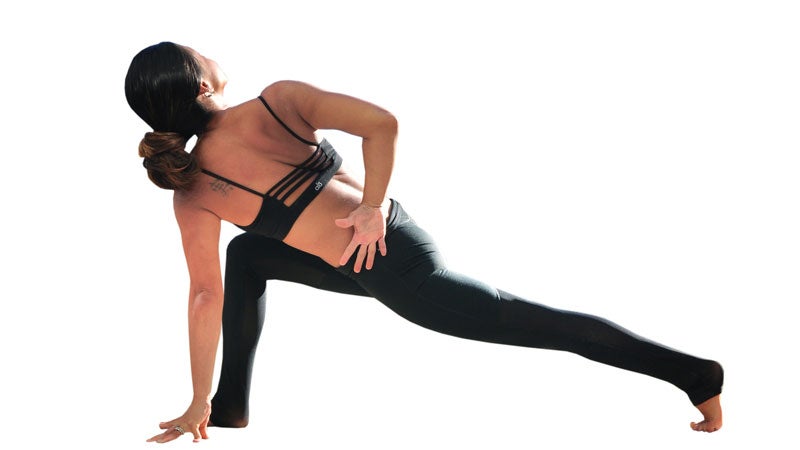Spinal Tap: Incorporate Yoga Twists for Increased Energy

After we exert ourselves in forward bends or backbends, twists can help reset the spine, coaxing it back to an even keel. This makes twisting an indispensable part of yoga practice, since the spine is, after all, the central axis around which we balance the body from left to right and front to back.
On the subtle-body level, the spine is the main channel for bringing our energy into equilibrium. And just as twists balance the physical body, pranayama (breathwork) balances the energy body.
To understand how this works, let’s take a closer look at the structure of the energy body. According to the yogis, there are thousands of channels in the body, called nadis (pronounced NAH-deez). The nadis make up a circulatory system for our subtle energy, similar to our physical network of veins and arteries. Instead of transporting blood, the nadis carry prana (life force) throughout the body. Three nadis are singled out as critical: the ida, pingala, and sushumna.
These three nadis are thought by some schools to originate in the muladhara (moo-luh-DAH-ruh) chakra, or root chakra, an energy center near the base of the spine. The sushumna (sue-SHOOM-nah) nadi is the hub around which the entire energetic system is organized and is located—where? You guessed it: along the spine. The pingala (PING-uh-luh) and ida (EE-duh) nadis then form a double helix that wraps around the sushumna like a pair of winding staircases. The pingala nadi ends in the right nostril, the ida nadi in the left nostril.
Pingala and ida represent, respectively, the heating and cooling energies of the body, often symbolized by the sun and moon, male and female deities, or sacred rivers. While we might naturally think of them as opposites, they’re really inseparable complements engaged in a perpetual energetic exchange, the dance of life.
But our dancing nadis are often energetically out of step with the music of the world and continually tripping over each other’s feet. So we tend to run hot one minute and cold the next, never really finding the comfort zone between the two extremes. Fortunately, yoga practices like asana, pranayama, and meditation provide us with the means to harmonize our dancers around the sushumna. Then our energy shifts into a state the yogis call samatva (equanimity), a condition of balance, peace, and intense self-awareness.
See More Twist Poses
Richard Rosen, who teaches in Oakland and Berkeley, California, has been writing for Yoga Journal since the 1970s.